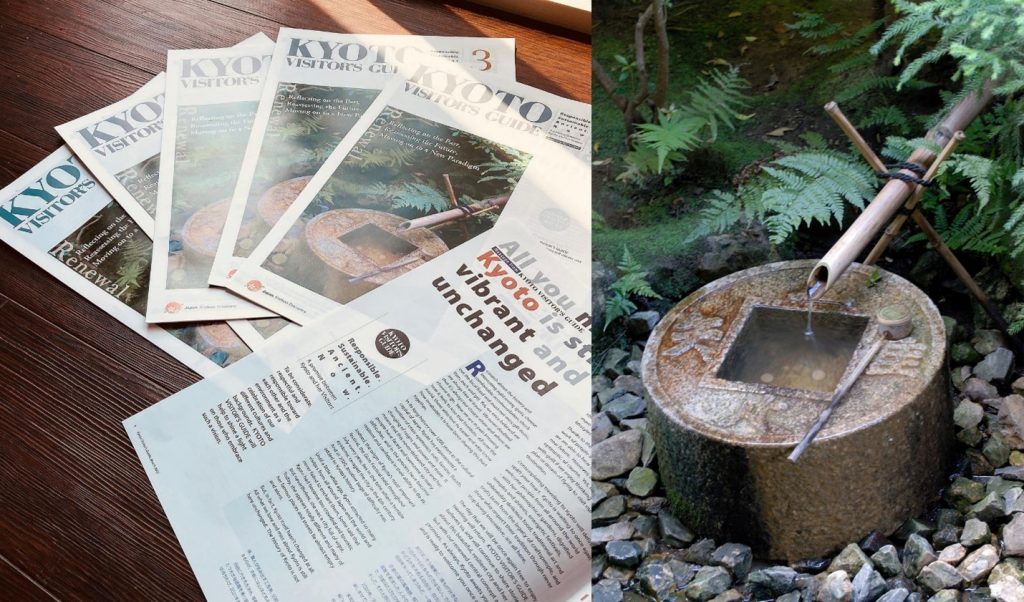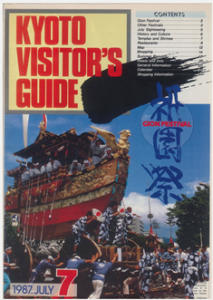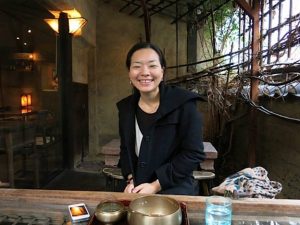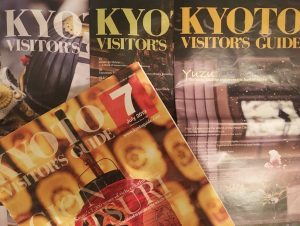
- ARAB NEWS
- 06 Jul 2025

Nader Sammouri
OSAKA: It would have been hard for a tourist, pre-COVID, not to notice the glamorous A3 picture on Japanese travel magazine Kyoto Visitors Guide’s (KVG) cover page, which leaves people who are used to it anticipating whether the next cover is going to be a beautifully symmetric shoji screen, showing a stone triad in the middle, or a zoomed photo on a samurai warrior’s traditional helmet or a washi lantern at a temple.
KVG has been introducing all kinds of aspects of Kyoto, from religion, gardens, festivals, and traditional rituals to ceremonies, people, dining scenes, art and crafts.
Aya Okubo, a bred cultural facilitator based in Nara and Kyoto, has been the editor and translator of KVG for almost 17 years.
The free monthly magazine is written in English for tourists and is one of the longest published monthly magazines in Japan, since 1987.

Okubo was born in Nara, one of Japan’s almost unrealized jewels. Japan’s capital used to move to a new location whenever a new emperor ascended to the throne, and Nara (奈良) took its turn to be a capital to Japan starting from the year 710.
“Nara’s history as the capital wasn’t very long compared to the history of Kyoto. However, many cultural foundations were established and flourished there. It is filled with undiscovered gems and charms that one can’t find in Kyoto, especially when going further to the southern and eastern parts, where one will be astounded by the assortment of friendly people, spectacular nature, and distinctive religious practices,” Okubo said.
When Okubo started her journalistic career, inbound tourism and targeting tourists coming from overseas wasn’t so popular yet, and it wasn’t a major business until quite recently.
“Around the year KVG was launched, there were only slightly more than 2 million visitors to Japan. The number grew dramatically in recent years, pre-COVID of course, and reached over 31 million in 2019. I remember that some restaurants and shops didn’t even prefer dealing with foreigners due to the language barrier and cultural differences for fear that they might lack the needed experience to accommodate foreigners responsibly,” Okubo told Arab News Japan.
She expressed how she felt accountable to represent Japanese culture through the magazine and makes sure to tell Kyoto’s best stories through it, which she believed were abundant.

…But something happened when COVID hit.
There were signals. Non-fleeting tourists, online meetings, and more screens.
“KVG had been in publication for over 30 years since 1987, but we had to make a tough decision last year in May, that is to stop the magazine for a while due to the current travel restrictions caused by the crisis. The world had been already immersed in the big digital age long before COVID stroked the world, but we had chosen to remain print-oriented media… until now.”
With no tourists visiting Kyoto, it was inadequate to keep publishing KVG in print, so it stopped.
But then, KVG started to wake up from a silent coma into a paperless world.
It may have lost the boundaries of paper, but it gained the boundaries of the globe.
“It wasn’t possible, to say honestly, for us, a print-oriented company, to adapt to become a good quality digital media platform immediately. The finance was very limited, especially after the pandemic started, but we tried to adapt and ride the waves of change. The only way for KVG to survive was for us to make it digital,” Okubo said.

Okubo believes that the true meaning and joy of traveling is “being there physically” and experiencing things with the senses, including trying out local food and drinks, witnessing how people live, smelling the air, and “reading it” through people’s non-verbal subtle suggestions.
But she still cherishes the value and meaning of publishing KVG as a printed media, with people holding it with their bare hands and flipping its pages. Nevertheless, she believes that flexibility and versatility are important today more than ever, and focusing on solutions rather than matters to blame is much more effective.
A part of that flexibility comes from understanding other cultures.
The editor said she thinks that learning and understanding different people and cultures always brings fresh ideas and thoughts.
“I hope that Japanese and Arab people can have a closer exchange and understanding in the future,” Okubo said, adding that she felt a culture shock when she visited the region.
“Would they see it as an entirely different world as well? I’ve been to Dubai a few times for work and was so impressed that it was quite an altered cultural sphere. I understand the uniqueness in cultures, though what I saw in Dubai astonished me. I experienced a feeling that I never felt before when visiting other countries,” she said. “As the editor of KVG, I am interested in what people from Arab countries generally know about Kyoto, or if people are generally interested in visiting. If so, I’d like to know what they particularly like to see, visit, and experience in this old cultural jewel.”
Okubo is making a huge contribution in presenting a great city to the world.
“It is not unusual that people bring KVG home and keep the copy for many years as their good memory of Japan. It makes me very grateful to pass those souvenirs to homes and now online and keep KVG alive,” she told Arab News Japan.
Okubo pointed out a stone water Basin or tsukubai (蹲踞) at the famous Ryoan-ji Temple. The basin lies by the rear corridor of the main building, which is, in its way, as philosophical as the world-famous rock garden of Ryoan-ji. It has a square basin in the center and four Chinese characters on each side of it reading “Ware (吾), Tada (唯), Taru-wo (足), and Shiru (知)”, meaning, “I only learn to be content”, or “I am content with what I am/have.”
KVG, physically speaking, might have been in a coma due to COVID, but parts of it still exist in many homes today, as a means of time travel, with people staring at its illustrations that are anchored in their minds with marvelous imprints of Kyoto.